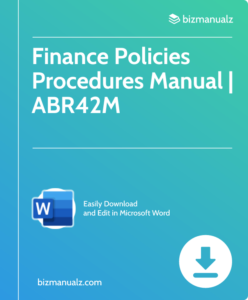What is the Difference Between Authorized and Outstanding Shares?

Authorized and outstanding shares are essential for grasping a firm’s monetary construction. They might appear complicated, but no worries! I’m here to explain it. What is the difference between authorized and outstanding shares?
Definition of Authorized Shares and Outstanding Shares
Authorized shares and outstanding shares are two significant terms related to stock ownership. Authorized shares refer to the maximum number of shares a company is legally allowed to issue. On the other hand, outstanding shares are the number of shares issued and held by shareholders.
Let’s explore their definitions and features:
| Authorized Shares | Outstanding Shares |
|---|---|
| Maximum number of shares a company can issue | Actual number of shares issued and held by shareholders |
| Decided at incorporation or noted in corporate documents | May vary through stock issuances or repurchases |
| Gives flexibility for future capital raising | Allows investors to have ownership rights and voting power |
| May include Preferred and common stock | Preferred and common stock |
It’s worth noting that authorized shares can comprise both preferred and common stock, whereas outstanding shares generally consist of common stock. Preferred stock typically carries specific rights and privileges, for instance, higher dividend payments or priority in liquidation events.
In addition, the number of authorized shares may be set when a company is incorporated or listed in its corporate documents. This offers the company with flexibility for future capital raising activities. On the contrary, outstanding shares can change over time as new shares are released through offerings or existing ones are repurchased.
A Pro Tip: Knowing the difference between authorized and outstanding shares is essential for investors looking to evaluate a company’s market value and potential dilution risks.
By understanding these key concepts, investors can make wiser decisions when studying stocks and analyzing their investment portfolios. So remember, while authorized shares represent the maximum number a company can issue, outstanding shares signify the actual number held by shareholders.
Importance of Authorized Shares and Outstanding Shares
Let’s begin with authorized shares. When a company startup is made, it issues a specific amount of shares that can be sold to investors. These are known as authorized shares. It’s like a limit set by the company for the number of shares they can issue.
Now, on to outstanding shares. Those are the shares actually issued by the firm and held by shareholders. Outstanding shares demonstrate possession in the company and give shareholders rights, such as voting rights.
So, what’s the difference between authorized and outstanding shares? Basically, authorized shares are like a reserve pool of potential shares that can be issued later, while outstanding stocks are those already issued and in circulation.
But why do companies have authorized shares if not all of them get issued at once? Companies have the flexibility for future funding or acquisitions without going through long legal procedures by having authorized but unissued shares. Comprehending the variation between these two types of shares is essential when looking at a firm’s balance sheet and evaluating its overall financial state.
Now, with this knowledge, you can confidently engage in talks about a company’s capital structure and perceive how ownership is distributed among investors. So next time someone talks about authorized and outstanding shares, you’ll be ready to surprise them with your knowledge of corporate finance. Don’t miss out – explore the world of stock ownership!
Authorized shares and outstanding shares are an integral part of the corporate world. These two terms have distinct meanings when it comes to a company’s stock. The importance of authorized shares is that they determine the maximum shares that can be issued. Outstanding shares meanwhile show the actual number of shares held by shareholders.
- Authorized shares are vital for corporate governance and investor trust. They ensure transparency and that a company stays within its limit when issuing new shares.
- Outstanding shares indicate the ownership stake and voting rights of shareholders. This info is used to evaluate a company’s market value and potential for growth.
- Both authorized and outstanding share figures are necessary for financial analysis, valuation, and decision-making processes, such as mergers or acquisitions.
Moreover, authorized and outstanding shares vary across companies due to factors such as industry regulations, capital structure, and shareholder agreements.
Pro Tip: Knowing the difference between authorized and outstanding shares is essential for investors who want to make sound investments and accurately assess a company’s financial status.
Differences Between Authorized and Outstanding Shares
Authorized shares and outstanding shares are two key financial terms. Authorized shares refer to the maximum number of shares that a company is allowed to issue. Outstanding shares are the actual number of shares issued and owned by shareholders.
Let’s break it down with this table:
| Categories | Authorized Shares | Outstanding Shares |
|---|---|---|
| Definition | Max shares a company can legally issue | Actual number of shares issued and held by shareholders |
| Purpose | Determine potential dilution of existing shareholders’ ownership | Calculate market capitalization and ownership percentage |
More details: Authorized shares give companies the flexibility to raise funds by issuing more shares in the future. Outstanding shares are the portion of ownership in a company that can be bought and sold on the stock market.
The origins of authorized and outstanding shares date back centuries. Corporate laws were created to protect shareholders and regulate corporations. These laws promote transparency and accountability in stock issuance and distribution.
Common Misconceptions and Challenges
In stocks and finance, there can be confusions about authorized and outstanding shares. These misunderstandings can lead to missed chances for investors. To clear up these misconceptions and address the challenges, here are some tips:
- Research: Learn about the company’s authorized shares and outstanding shares. This will show how many shares are for trading and any risks.
- Monitor: Keep track of stock buybacks and secondary offerings. These will influence shareholder worth and the market.
- Consult: Consult a financial advisor or broker to understand the complexities. They will provide help based on individual needs.
By understanding the difference between authorized and outstanding shares, investors can be confident in their decisions and make choices with accurate information.
Examples and Case Studies
Examples and case studies can show the variation between authorized and outstanding shares in an understandable way. Let us explore some real-life scenarios to get a better understanding of these concepts.
To get an idea of the difference between authorized and outstanding shares, take a look at this table:
| Company Name | Authorized Shares | Outstanding Shares |
|---|---|---|
| XYZ Corporation | 1,000,000 | 500,000 |
| ABC Inc. | 500,000 | 200,000 |
Here, we can observe that XYZ Corporation has authorized 1,000,000 shares but only has 500,000 outstanding shares. On the other hand, ABC Inc. has authorized 500,000 shares but only has 200,000 outstanding shares. This can help us comprehend that not all authorized shares are immediately available or distributed.
It is vital to keep in mind that authorized shares refer to the highest number of shares a company can issue according to its corporate charter or articles of incorporation. Outstanding shares mean the actual number of shares held by investors and traded on the market.
An important tip is to remember that while authorized shares offer companies flexibility for future fundraises and expansions, outstanding shares reveal the ownership interest of shareholders and determine elements like voting rights and dividends.
Authorized and Outstanding Shares Difference
The distinction between authorized and outstanding shares is critical to comprehend for investors and shareholders.
Authorized shares are the maximum number a company can issue.
Outstanding shares are the ones that have been issued and held by shareholders.
This knowledge is important as it assists investors in judging a company’s ownership structure and likelihood of dilution of their holdings. It also affects a company’s capacity to generate funds or issue new equity.
For instance, XYZ Corp., a tech startup had 100 million authorized shares. At first, only 50 million were issued and owned by early stage investors. When expansion was needed, an initial public offering was planned for more funds. Since there were only 50 million outstanding shares, the remaining 50 million authorized shares were used for the IPO. Now, XYZ Corp. has 50 million outstanding shares with investors and 50 million available for future issuance.
This story shows how understanding the difference between authorized and outstanding shares can help investors and companies to understand equity ownership and capital raising.
Frequently Asked Questions
 FAQ 1:
FAQ 1:
Q: What are authorized shares?
A: Authorized shares refer to the maximum number of shares that a company is allowed to issue to investors or shareholders. These shares are specified in the company’s legal documents, such as the articles of incorporation.
FAQ 2:
Q: What are outstanding shares?
A: Outstanding shares are the actual number of shares that have been issued by a company and are held by investors or shareholders. These shares are actively traded on the stock market.
FAQ 3:
Q: What is the difference between authorized shares and outstanding shares?
A: The main difference is that authorized shares represent the maximum number of shares a company is allowed to issue, while outstanding shares represent the actual number of shares that have been issued and are held by investors. Authorized shares may not all be issued at once, and a company can choose to issue additional shares in the future.
FAQ 4:
Q: Can a company have authorized shares that exceed its outstanding shares?
A: Yes, it is common for a company to have authorized shares that are greater than its outstanding shares. This provides flexibility for the company to issue additional shares in the future if needed, for reasons such as raising more capital or acquiring other companies.
FAQ 5:
Q: Are outstanding shares the same as the total shares available for trading on the stock market?
A: No, outstanding shares are not always the same as the total shares available for trading. Some outstanding shares may be held by insiders or not available for public trading. The portion of outstanding shares that is available for trading represents the company’s public float.
FAQ 6:
Q: Why do investors and analysts pay attention to the difference between authorized and outstanding shares?
A: The ratio of authorized shares to outstanding shares can provide insights into a company’s investor dilution potential. If a company has a significantly higher number of authorized shares compared to its outstanding shares, it may mean that there is a potential for dilution of existing shareholders’ ownership if more shares are issued in the future.
















Leave a Reply